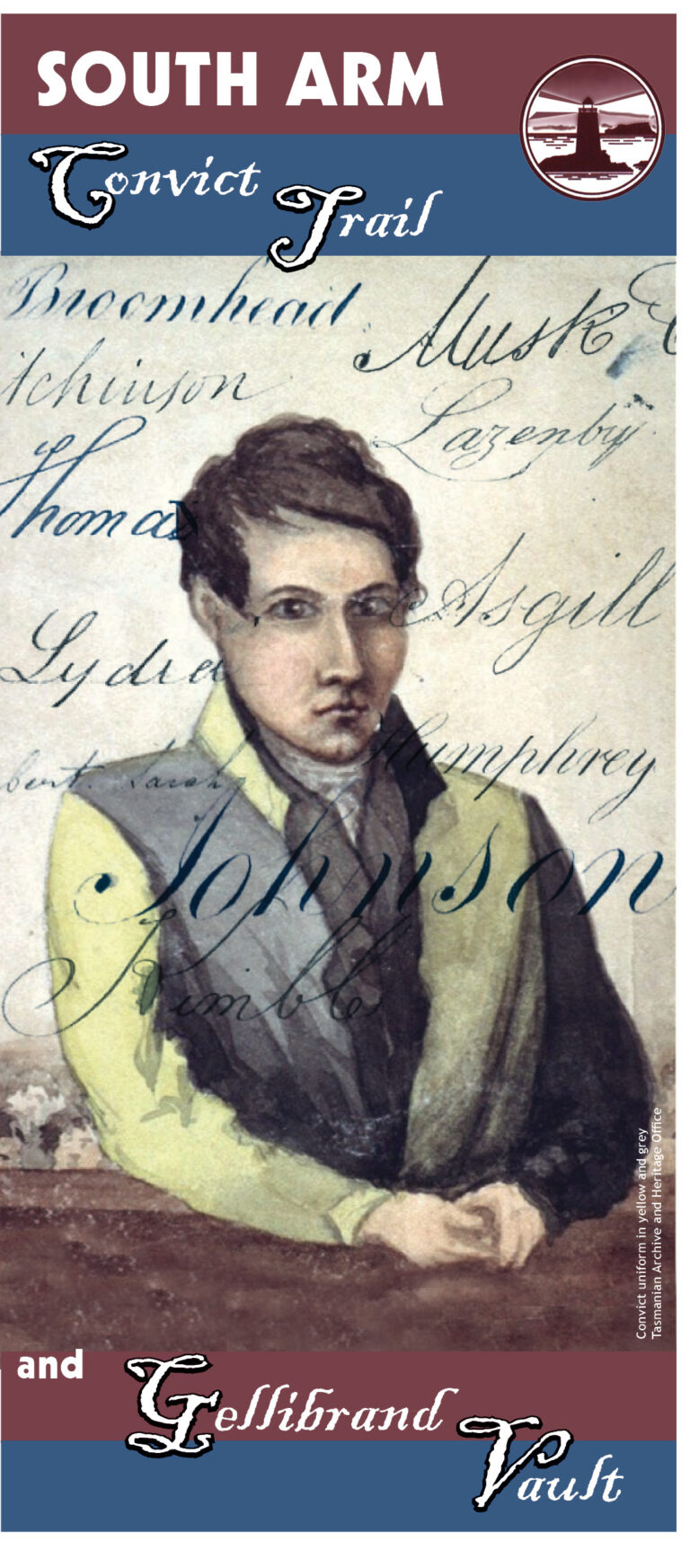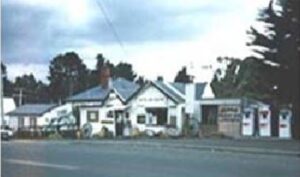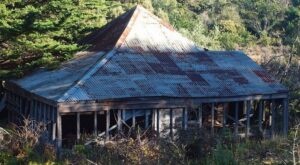South Arm Convict Trail
Follow the South Arm Convict Trail and learn more about the men and women who settled the South Arm Peninsula.
Until now, the stories and most of the convict names have largely been forgotten, hidden under the twentieth century development of beach houses and shacks.
These are the convicts assigned to William Gellibrand who received the first land grant of 2220 acres at Arm End with ten convicts. William was known for the care of his convict servants, providing them with a comfortable hut and clothing that did not distinguish them as prisoners.
His grandson George followed and had a list of pass holders from 1848 to 1852.
The Trail
The Trail is a series of 14 interpretative signs. The start and mid points (A & B) provide general information and each of the 12 signs along the Trail tell the story of an individual convict.
Starting at the BBQ near the South Arm Community Centre in Calverton Place (A), it runs along the multi-use path to the Opossum Bay Park, just past the shop.
Download the South Arm Convict Trail brochure and map which also includes details of the Gelilbrand Vault.
Follow the trail then read more about the convict men and women here


South Arm has a rich heritage of people and places with many stories to tell. Our local historian, Maurice Potter, has gathered many images and tales over decades, much of which is wonderfully displayed in the History Room at the South Arm Community Centre. (Read about the opening here >)
A walk in South Arm history with Maurice - Part 2
South Arm historian, Maurice Potter, continues his walk in history.
Part 1 below took us from Goats Bluff to the South Arm Store and today he's taking us for a further wander back in time and along the road, filling in some background as go. See if you can visualise South Arm back then...
I begin with the history of the South Arm store, built by Mr. Ardy Griffiths in 1914. Looking at the store as it stands today, try to visualise how it was set back from what is there now. Remove the post office, the bus shelter, the store room and the petrol bowsers which weren’t there until around 1935 .
The home was built by Mr Griffiths who didn’t ever run the store. It was passed to his son-in-law, Bill Richie, who also operated a small shop selling hot water and ice cream near the track onto the Halfmoon Bay beach.
It was later sold to Mr & Mrs Sargent, who then sold it to Mr William (Bill) Pitt around 1937. The next new owner was Mr Bart Hughes and in 1944 alterations to the front of the store took place, with the small area for the Post Office and the wall and original window moved to the position that we see today.
Since that early period, it has had several owners – Mr. Woods around 1946 then Rex Calvert for a short time then Mr & Mrs J. Parkinson who had it the longest, around 20 years. After that came Mr. Jackson, Mr. Harmon, Mr. Dillon, Mr. P. Calvert, Mr. B. Grubb, Mr. J. Cini, Mr. Walker, Mr. G. Coburn, Mr. P. Purdon, Mr. N. Broadby, Tony and Ann Beattie and today Jacqui and Mark Stevens.
Opposite the local store the land was still being farmed by the Alomes family and it didn’t change hands until 1948, when small allotments where developed. The next land under development was by Mr Robert Calvert, selling the two allotments below the store. The first became what is known as Oceania and the second called Atlanta, also known as Lloyd’s Corner, later removed allowing for new road development.
The Cenotaph was built in 1952-56. As we walk around the and past the Cenotaph the home set back on the right was then the home of Mr Alfred and Leanna Calvert. On the left side we can see the remains of the early shack of Mr Withington which they used for holidays in 1920-40.
Walking on we find on the right one of the oldest holiday cottages in the area called The Bungalow. It was built by Will Watson, brother of John Edwin Watson. John and Amelia (nee Alomes) Watson lived at 'York Grove', Sandford. Their sister Elizabeth married John Gibbs Tolman (Hobart businessman and of Tolman's Hill fame) then their son Charles bought the cottage from his uncle. Charles' children Jack and Olivia spent many summer holidays at The Bungalow, often with a school friend in tow - one Errol Flynn!
On the left opposite the Bungalow was a large block which also belonged to the Tolmans which was covered with very large pine trees, some remain.
As we walk further in these early days, we could see the small homes surrounded mostly by fruit trees as these were the homes of the people who had lived in South Arm for many years.
On the right we see the home of Audrey and Ted Gorringe, set back on what was 10 acres of orchard. On the left was a small cottage which remains today, occupied by relatives of the original family owners. Next to that was the home of Mr. Perce Hook who for years was the organist at St Barnabas Church.
Opposite was the home of Mrs Venetia Musk, set well back from the road and surrounded by lots of fruit trees. Her home was on a much higher level than the road as the area below would flood during the winter months - she even had a small bridge built to cross to reach the road!
After that it was large areas of bushland with the odd farmer’s home set amongst the trees.
This brings me to end of our walk in history and I trust that it has provided some entertainment while we sit at home during this shut down due to the Coronavirus.
Maurice Potter
Photos: John Potter's house, looking south on South Arm Road, Rosemount and Coralyte
Bungalow family informati0n: thanks to Michael Topfer



A walk in history with Maurice - Part 1
On the occasion of his 88th birthday, local historian Maurice Potter is not hugging anyone nor shaking any hands, instead staying home as part of the necessary restrictions imposed on life in April 2020.
Yet at the same time he will be looking back at all his family and friends that have in the past at some time shared the celebrations.
Today he’s taking us on a walk back in time, starting at Goats’ Bluff…
Hidden in the cover of the trees here are the remains of my family’s old home, now becoming part of the bush again. What stories have been created and told there over many, many years!
One that has been well told in past newspapers was about John Potter who had been made a constable for the area. This was apparently due to his rescuing of three people from Alfred & Lizzie that went ashore on Hope Beach and his ability to recover those who had drowned including the body of John Musk who fell into the water while loading their sailing boat with potatoes, a most unfortunate accident.
From here we walk along the Neck and onto the land now occupied by the South Arm RSL & Community Club. At the time I was leaving school this land was owned by the late Alan Calvert and covered in quite large gum trees. He had already pulled the trees over with the help of Mr. Alf Calvert’s steam tractor which was operated by Mr Ron Bezzant. My father William” Bill” Potter had a contract to cut the trees and remove the wood for 12 shillings a ton and then he sold it on to the people throughout South Arm.
As I had left school this was my first job that lasted for several years, in addition to the other every day jobs that had to be done on the farm. This was all happening while soldiers were in training at Fort Direction, getting ready to go to war in 1940.
As we walk on to the home “Coralyte”, then owned by Mr Ardy Griffiths and his son George Daniel Griffiths, we come to that lovely old barn which was built around 1914. This is just one of the old farm buildings to be found throughout South Arm that still remains in its original state. I was told by a family member that the main corner wood poles were salvaged from the load of logs from a shipwreck that happened years ago at the Iron Pot Lighthouse. (This would have been from the wreck of the steam ship “Lintrose” (1932) which was carrying Hydro Poles and happened before the Lighthouse was built)
This shed has stood the years very well and was used by several of the Griffiths families with the home itself used as a boarding house around 1921 to 1940. Today this home is in the hands of Mr Alan Bradshaw.
As we walk further into the township of South Arm, we would have been greeted on both sides of the then gravel road by a display of all kinds of fruit trees. On the right there was the large orchard of Robert & Henry Calvert and on the left the property of George Alomes & Sons. The House of “Rosemount” would have stood out on the rise above surrounded by lovely rose bushes with display of fruit trees of several varieties below the house.
I can remember the Cox’s Orange Pimins, New Yorkers and on the lower area, where the coffee shop and chemist are today, was a great row of very tall cherry trees.
This area alongside the road was known to flood in winter time and it wasn’t surprising to see wild ducks swimming amongst the fruit trees!
Photos: John Potter's house, looking south on South Arm Road, Rosemount and Coralyte




Get your best horse out - it's time for a ploughing match!
In the 1800s, weekend entertainment at South Arm often revolved around what people did during their week and with most being farmers or orchardists, it’s not surprising to read a report from The Mercury of 28th December 1863 that talks of a ploughing match taking place. The school too, was thriving and, as often pops up in the historic articles about South Arm, the community style was mentioned in fulsome terms.

SOUTH ARM
From a correspondent
A ploughing match in this district was held on the 19th inst. Nine teams came on the ground in excellent order, and the work began at 10 a.m.
The ground selected was a field belonging to Mr. Musk, not far from his residence, and fronting Ralph's Bay. G. J. Morrisby, Esq., J.P., was appointed to act as Judge.
A goodly company assembled on the ground at an early hour, nearly all the residents in this part of the district with their wives and families, including John Watson, Esq., Messrs. J. & G. Alomes, Mr. Calvert, Mr. Musk. Mr. Winspeare, Rev. T. Gellibrand, Mr. Williams, Mr. Foreman, &c. &c.
At the conclusion of the watch about 50 persons sat down to a substantial and well-arranged dinner, and the greatest harmony prevailed. The prizes were then handed over to the successful ploughmen amidst the most enthusiastic cheering.
On the same day the South Arm Public School held its annual festival. There was an excellent spread for the children, provided in a first-rate manner - all the families of the place clubbing together, and carrying out their plan in a style not often seen.
C Calvert, Esq., occupied the chair. The room was beautifully decorated with flowers, and filled with people.
The Rev. T. Gellibrand read the report of the annual examination, which spoke of great progress and good discipline under the able management of Mr. Carew.
A great number of prizes were distributed, and the ceremony closed with the presentation of an address to Mr. Carew, signed by all the people, and accompanied by a handsome present, to which Mr. Carew replied in a very suitable and feeling manner, receiving much applause from the assembled company.
Maurice Potter
Historian